Through 15 years of telling stories of the fringes in Davao and other parts of Mindanao, photographs have helped capture the moments and emotions of the story. As we commemorate our 15th year, we combed through our catalog to bring 15 defining images of Mindanao that weaves our reportage on local politics, mass movements and peoples’ daily struggles.
Decades of counter-insurgency strategies, have only spilled blood among farmers, Moro and indigenous peoples in Mindanao. A family grieves over the killing of a Lumad rights defender in Loreto, Agusan del Sur in September 2013.

GRIEF OVER BROTHER, LUMAD DEFENDER
Sister of Benjie Planos, slain leader of the Agusan Manobo group, wails and clings to his body during his burial on Tuesday. Planos’ murder comes weeks after the Manobos returned to their community after an agreement to stop militarization in their community in Loreto, Agusan del Sur. The Manobos pin his murder on paramilitary and soldiers. (davaotoday.com photo by Earl O. Condeza)
In the past seven years, the Manobos of Talaingod, Davao del Norte have been further driven away from their ancestral territories, and their children shut off from their schools, as harassment and red-tagging by the paramilitary and military officials continue to divide the tribe.

Some 1,500 Ata Manobos left their villages last April 1 in the hinterlands of Talaingod, Davao del Norte after what they said were harassments brought by military troops occupying their communities for weeks. (Ace R. Morandante/davaotoday.com)
“My dear friend” is how then Mayor Rodrigo Duterte describes New People’s Army (NPA) commander Leoncio “Ka Parago” Pitao , as they meet in 2013 during the release of captured soldiers. The two bonded for decades as the mayor reached out to the revolutionary movement to discuss peace. When Parago was killed in a military operation in 2015, Duterte allowed a funeral march in the city where 10,000 from Parago’s base attended.

MAYOR MEETS GUERRILLA LEADER
Davao City Mayor Rody Duterte jests with his “long friend” New People’s Army guerrilla Ka Parago saying he should be the next mayor of Davao or at least barangay captain of Paquibato. (davaotoday.com photo by Ace R. Morandante)
Traveling by bus and ferry from Mindanao to Metro Manila, the yearly Manilakbayan campaign from 2014 to 2017 converged hundreds of Lumad, farmers and local activists to engage national leaders and advocates to uphold human rights and ancestral domain. Davao Today covered Manilakbayan in 2015.
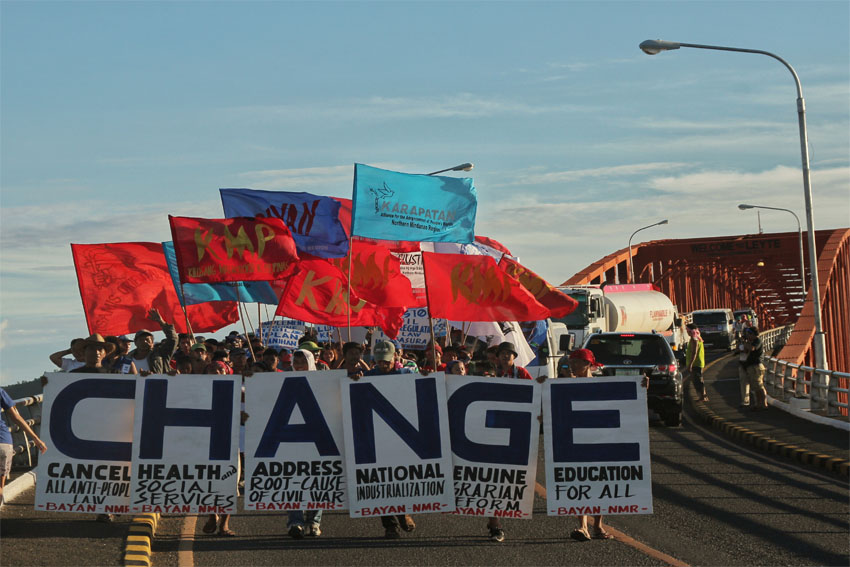
MARCH TO MANILA. Hundreds of delegates of Manilakbayan para sa SONA from Mindanao, along with members of progressive groups from Eastern Visayas march in San Juanico bridge connecting Leyte and Samar islands on Wednesday afternoon, July 20. The delegates are traveling towards Manila to attend the first State of the Nation Address of President Rodrigo Duterte. (Earl O. Condeza/davaotoday.com)
This award-winning photo shows a police officer shaking hands with an NPA fighter during the safe release of a soldier being held as prisoner-of-war in Agusan del Sur.
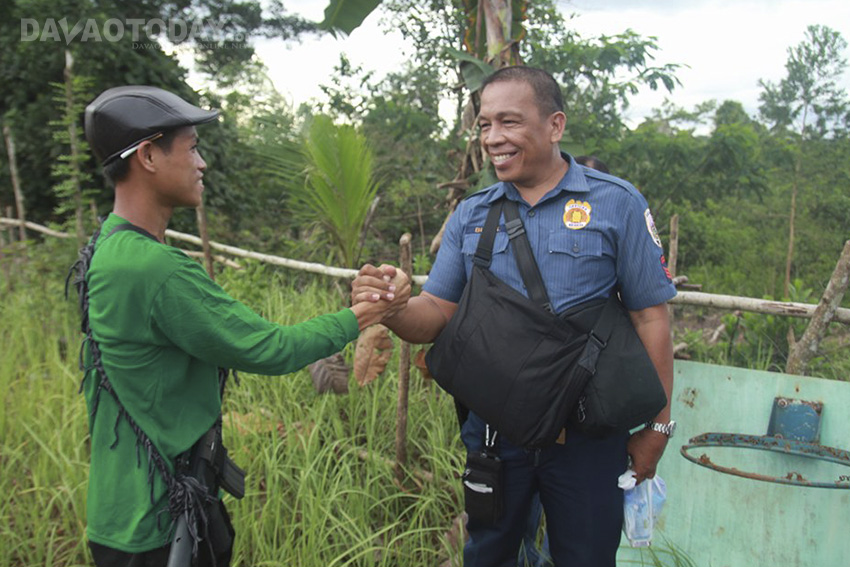
A member of the New People’s Army and a police escort shake hands as they meet during the NPAs release of its captured soldiers in San Luis, Agusan del Sur. (Ace R. Morandante/davaotoday.com)
Davao Today was one of the few media outfits that witnessed the actual dispersal of the farmers in North Cotabato by police on April 1, 2016 now called the “Kidapawan Massacre” where two persons were killed including a bystander and several wounded by gunfire. The farmers demanded for food relief as months of El Niño affected their harvest.

YELLOW LINE. A yellow rope serves as the division between the protesting farmers and the anti-riot police from the province in Kidapawan City. The farmers are demanding for 15,000 sacks of rice and subsidies from the calamity fund of the provincial government. (Earl O. Condeza/davaotoday.com)
Rodrigo Duterte has always been a subject of media with his controversial stand and quips. His bid for the presidency was fervently followed by local media, which began as a question in 2015 up to his euphoric campaign and victory.
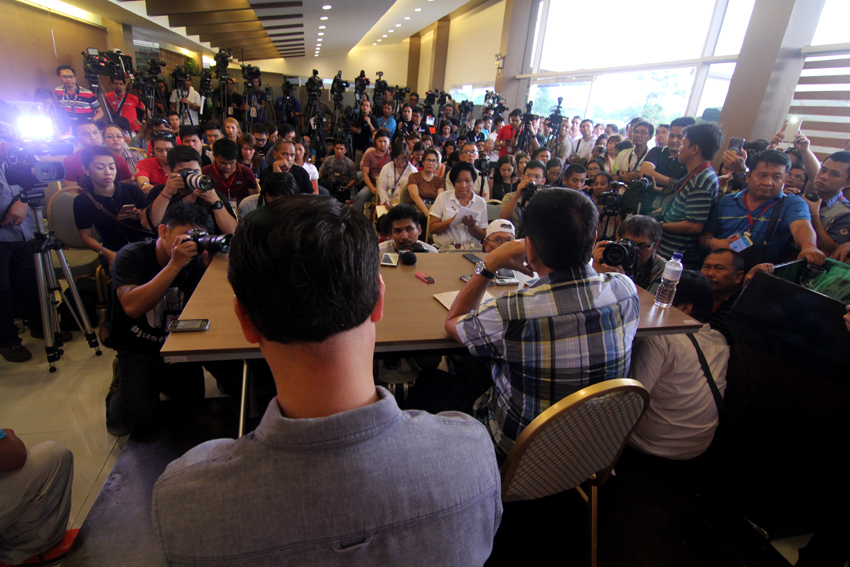
Numerous international, national and local media cramp inside a function room at the Matina Enclaves in Davao City during the first press conference of presumptive President Rodrigo Duterte a week after the elections.(Ace R. Morandante/davaotoday.com)
September 2, 2016, a blast ripped in the middle of the busy Roxas Night Market, killing 15 persons and 60 others injured, uniting Davaoeños for solidarity of the victims. Seven persons were recently convicted for the bombing.
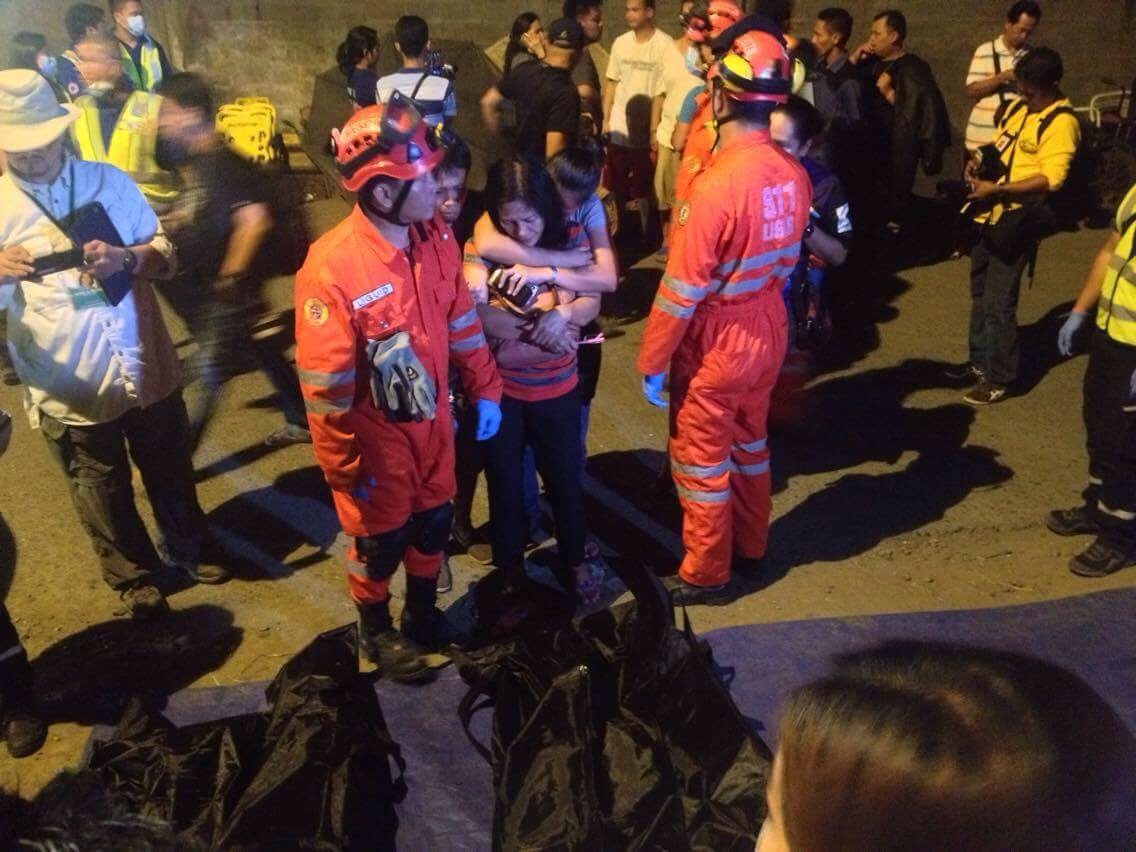
Families grieve as they identify their kins killed in the blast that rocked the busy night market along Roxas street here Friday night, September 2. (Maria Patricia. C. Borromeo/davaotoday.com)
Peace talks with the National Democratic Front was revived at the start of the Duterte presidency. The self-proclaimed “leftist” appointed Davao officials to the government panel: Jesus Dureza (presidential peace adviser), Silvestre Bello III (head of the government negotiating panel) and Angela Librado. Davao Today was able to cover the peace negotiations, as government and NDF panels worked for the socio-economic reform framework to address the roots of poverty and conflict. These gains were shuttled as Duterte called off talks in 2017.
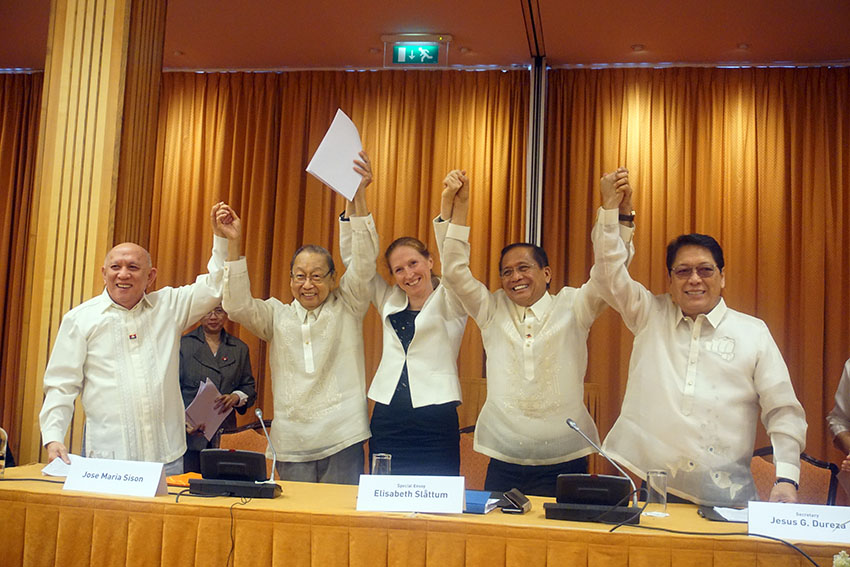
SUCCESSFUL ROUND. The Philippine government and the National Democratic Front of the Philippines conclude the fourth round of talks on Thursday, April 6, 2017 at the Radisson Blu Palace Hotel in Noordwijk Aan Zee in the Netherlands. Negotiators of the government and the NDFP raises their arms with the third party facilitator from the Royal Norwegian Government. L-R: NDFP peace panel Chairperson Fidel Agcaoili, NDFP Chief Political Consultant Jose Maria Sison, Norwegian Special Envoy to the Philippine Peace Process Elisabeth Slattum, Presidential Peace Adviser Jesus Dureza and GRP Chief Negotiator Silvestre Bello III. (Zea Io Ming C. Capistrano/davaotoday.com)
Marawi City was left in rubbles after five months of gunfight and artillery attacks between government troops and the ISIS-inspired Maute fighters. Three years after its ‘liberation’ thousands of displaced Maranaws tell the story of neglect and hardship as they long to return to their homes.
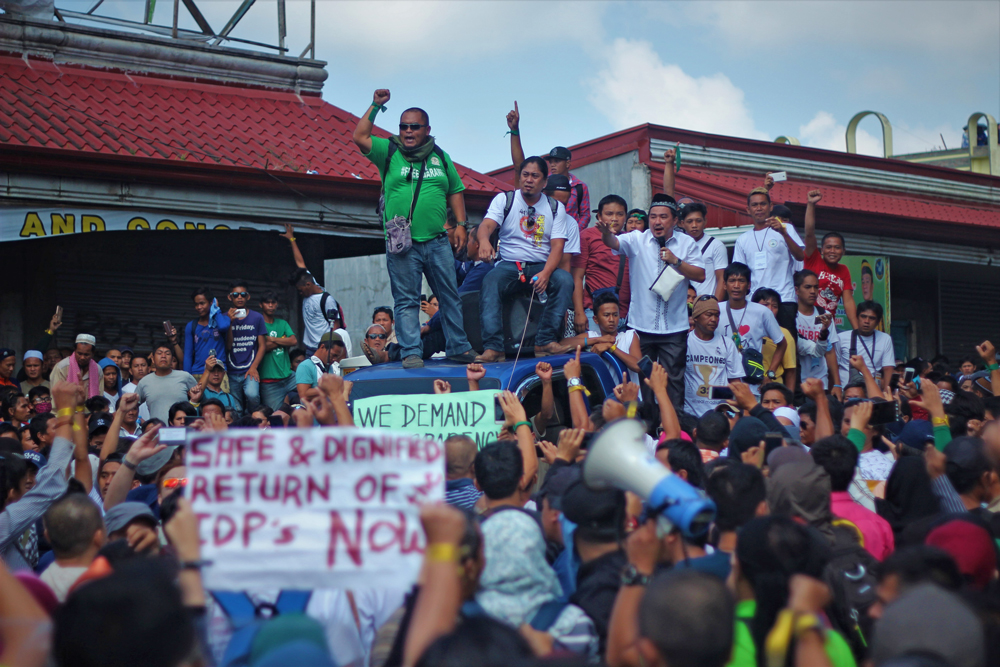
Thousands of Meranaw residents in Marawi City stage a symbolic protest to condemn the slow-paced government rehabilitation of their homes ravaged by war on Friday, March 30, 2018. (Kath M. Cortez/davaotoday.com)
President Duterte put the entire Mindanao under Martial Law during the siege in Marawi on May 23, 2017. Even after the Maute group was “eliminated” that year, Martial Law was extended by Congress twice, ending on December 31, 2019. Human rights defenders said the military and paramilitary took advantage of the declaration to run rampant on abuses and human rights violations in Lumad, peasant and Moro communities.
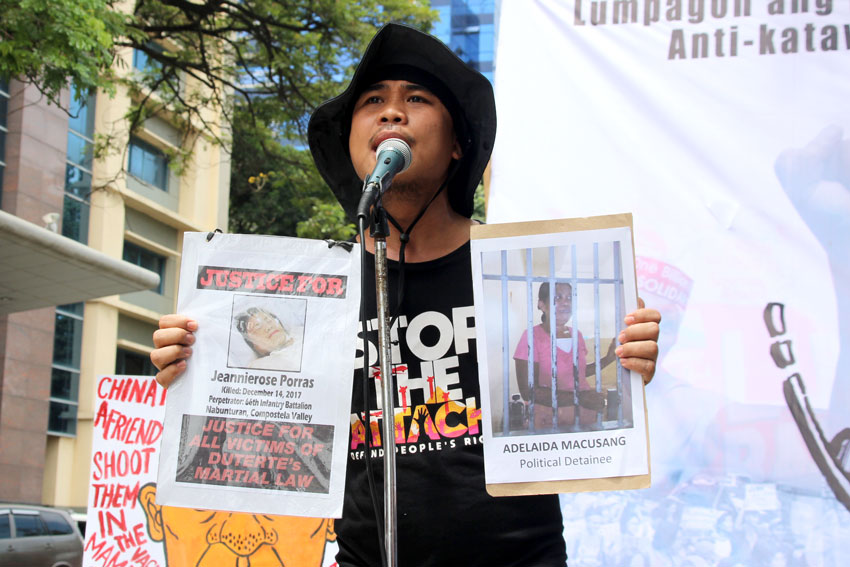
BLOODY RECORD. Jay Apiag, secretary general of Karapatan, hits the Duterte administration for having a “bloody” record on human rights violations. Karapatan has recorded 96 cases of political killlings in Southern Mindanao region alone since 2016, 66 cases were documented during the implementation of martial law in Mindanao. (Mara S. Genotiva/davaotoday.com)
The Manobo of Surigao del Sur have been forced to flee due to military operations. In 2015, the killing of their school director and two leaders by the paramilitary sparked nationwide outrage. The leader of the paramilitary was killed by the NPA this year, but military operations still continue.

Lumad evacuees walk past a military checkpoint in Barangay Diatagon, Lianga town on Monday, July 16, 2018. The military barred the Lumad to enter the center of Barangay Diatagon, the Lumad were only allowed to pass after negotiations. (Mara S. Genotiva/davaotoday.com)
Davao Today joined the decade-long campaign for justice for the murder of 34 media people in the 2009 Ampatuan Massacre. Journalists and families of victims hold memorial services on the 23rd of November every year. The last gathering was victorious as the court convicted the heads of the Ampatuan clan.
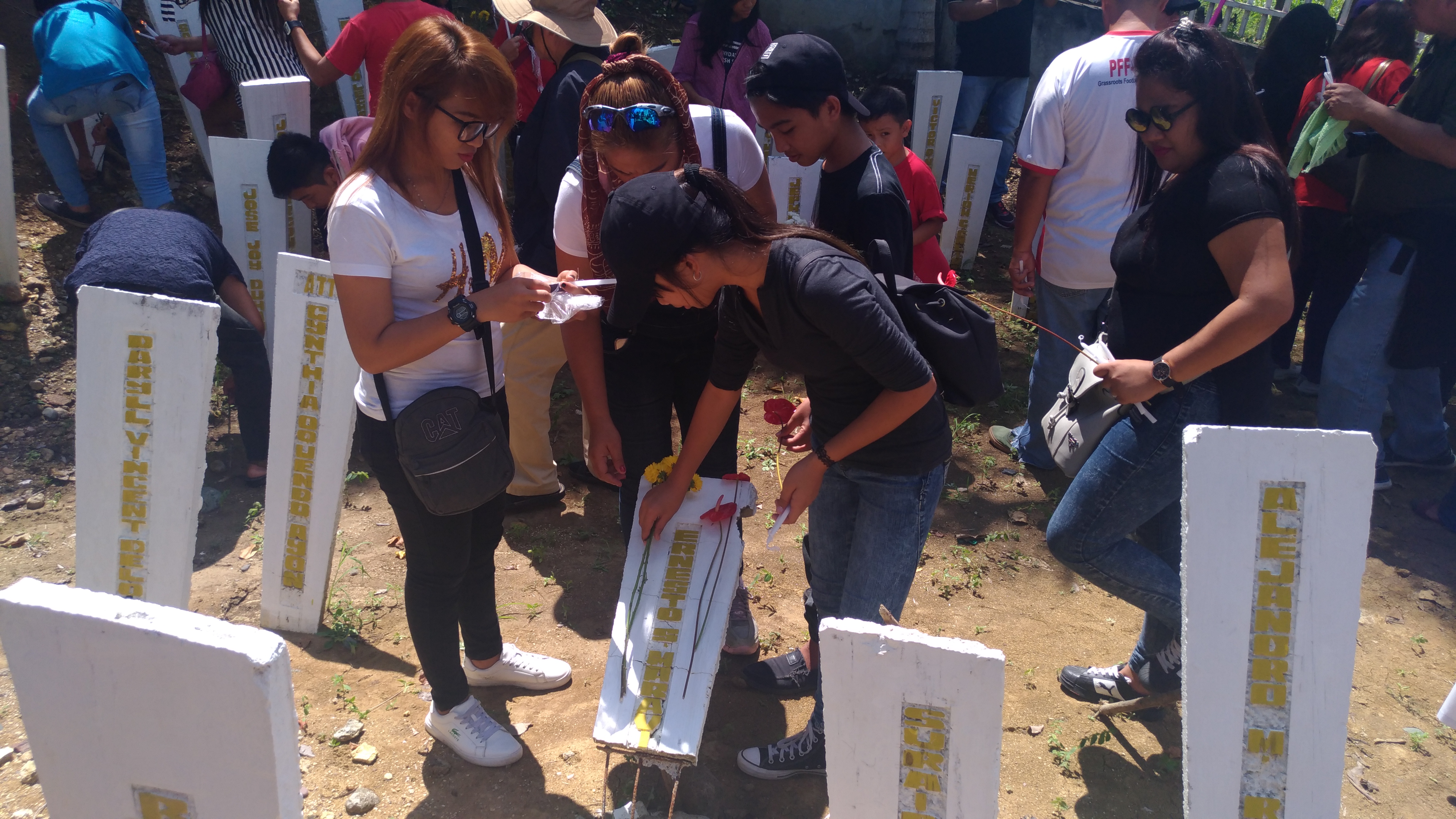
EIGHT YEARS. Families and friends of the journalists killed in Ampatuan town in Maguindanao visit the graves of the victims after a mass held at the memorial marker at Sitio Masalay, Barangay Salman on November 19, 2017. (Mara Genotiva / davaotoday.com)
A cart doubles as a bed for this vendor and son after a whole day work. Poverty and low standard of living remains unchanged in the city as well as in the rest of the country.
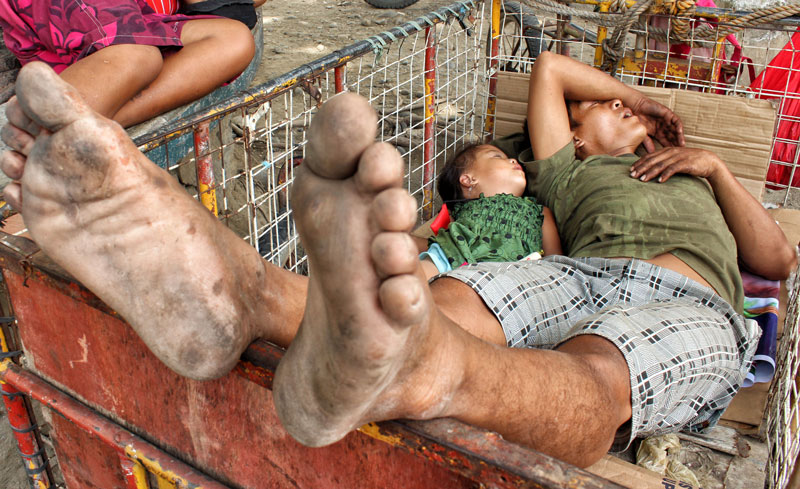
MULTIPURPOSE. After hours of picking and transporting garbage which they sell at the junk shops, a father and child take respite in this side of the Freedom Park in Davao City. Perhaps, they also call cart their ‘mobile home.’ (davaotoday.com photo by Medel V. Hernani)
The coronavirus disease (COVID-19) pandemic has impacted the lives of Filipinos especially the poor. Davao Today puts thrust in featuring stories of ordinary citizens trying to survive the economic and health crises.
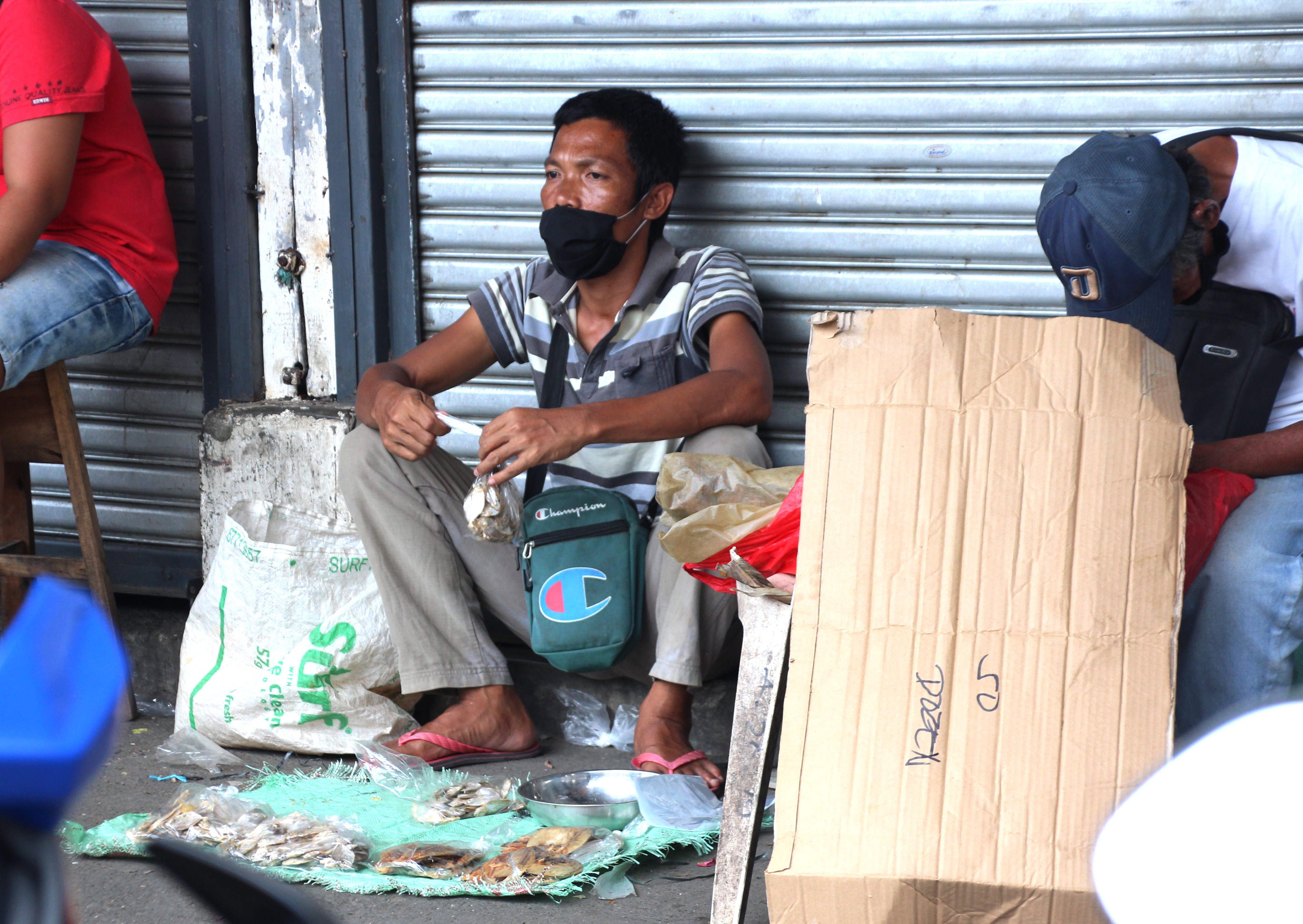
Tony is in deep thought as he prepares the dried fish to sell in Bankerohan Public Market.(Kath M. Cortez/davaotoday.com)










